Rearing Young Discus
As the discus fry start free-swimming, they become more of a challenge for their parents. The parents will spend a lot of time trying to catch the babies that swim away from the group. To catch the small fish, they will actually suck the fry into their mouths and then spit them back towards the other fry.
Red Passion Discus with Fry
Eventually, however, the parents will not be able to keep all their baby fish in one place. Once this happens, the fry will start forming small schools. They will still be eating from the parent’s sides, but they are starting to become more independent. However, because they can now move further away from their parents, some fry will starve to death because they could not get back to their parents in time to feed.
After about 11 or 12 days, your adult discus will most likely tire of their babies being constantly on them. Also, the longer the fry stay with their parents, the more chance that internal parasites could be transferred from the adults to the young fish. At this point it is a good idea to move your new fish to a rearing tank.
Keep in mind, too, that if your breeding pair spawns again when the babies are still feeding off them, there is a good chance the adult fish will eat the resultant spawn. If you notice that the parent fish are starting to exhibit spawning behavior, remove the baby fish immediately.
As the baby fish grow, they will be able to eat larger foods, as well as, a more varied diet. After the baby brine shrimp they will eventually be able to eat daphnia, small mosquito larvae, and other similar foods. Avoid giving your new fish flake food until they are at least four weeks old, and keep in mind that it might take some time to get them to accept flake food.
Once you discus fish is about the size of a dime, you can usually start giving them grated frozen beef heart. In the beginning, you will only want to give them one serving of beef heart a day, but you can gradually increase this to several feedings a day. Once your fish is happy eating flake food, beef heart, and frozen bloodworms, you can wean them off the brine shrimp.
Young Red Passion Discus
You can easily remove your baby fish from the tank using a siphon tube. The tank you move them into does not have to be filled as high as your regular tank. In fact, it’s a good idea to keep the water level lower (but still enough to support your fish!), because it will make it easier for your new fish to find their food. Over time, as your fish grow, you can add more water to the tank until it is full.
At this point in discus maturation, it is extremely important that your tank remain sparkling clean. You must remove any left over food, and you must perform frequent water changes to avoid high ammonia content.
If your young fish are well fed and kept in high-quality water, they will grow very fast. You will probably need to feed your fish 10 – 12 times a day as they grow and this can make it hard to keep your tank clean. Also, even though your fish are small, there are A LOT of them and that will take a toll on your tank. At this point, it is very difficult to keep your tank as clean and balanced as it should be, but you must do your best to provide the best possible conditions for your fish. The quality of the final adult fish is determined at this point it its development.
Adult Red Passion Discus with Young Red Passion Discus
To help in feeding your young discus you can use a top-loading automatic feeder like the Rondomatic 600. This feeder allows you to load it up in the morning and then let it feed your fish every two hours. The good thing about small feedings is that the fish will consume most of the food so there won’t be as much left over to dirty the tank. An automatic feeder can be used until they are six months old.
Once your fish are more than a half inch in size, their continued growth is based on their food and water quality. You will probably notice that some fish are not growing as quickly as others or some fish are deformed. The best course of action is to remove the weak and deformed fish from your tank. This allows the healthy fish to continue to grow and thrive.
QUESTIONS
- How can you help your discus to grow large and healthy?
- How can you help young discus to flourish?
- How can you create a healthy environment for young discus?




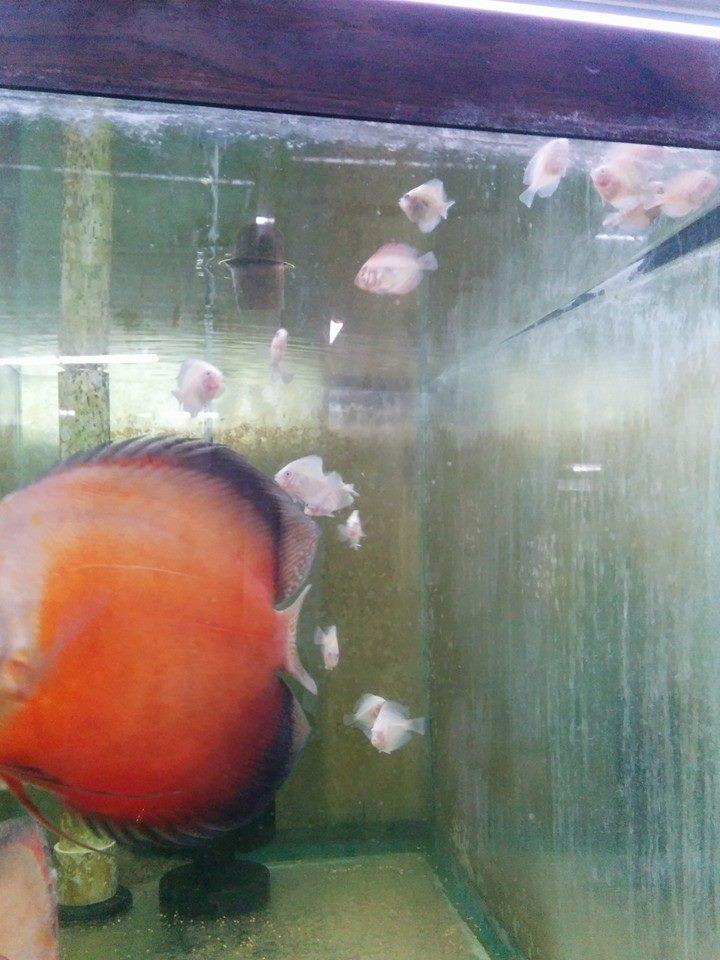
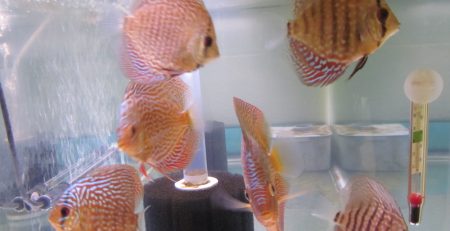
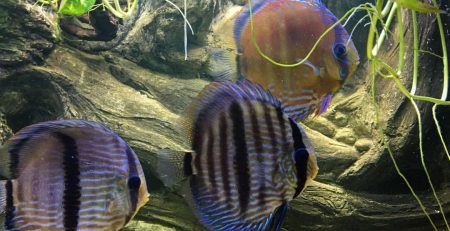
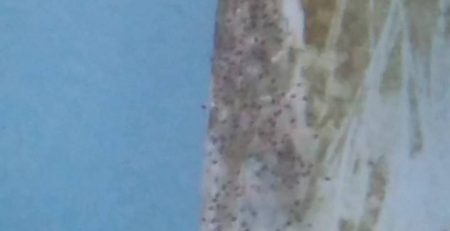
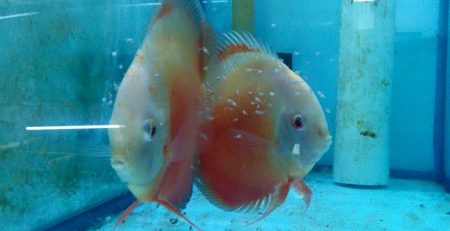
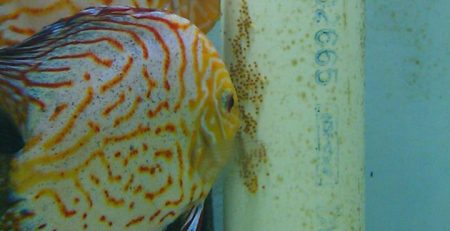
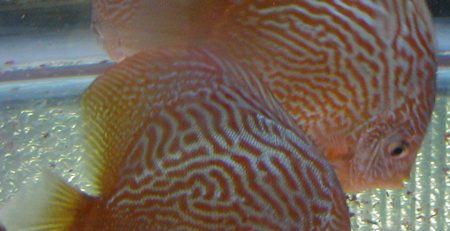
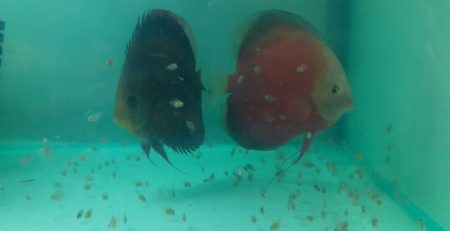

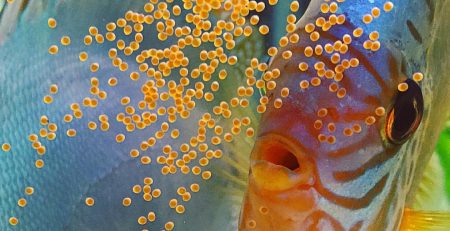

Leave a Reply
You must be logged in to post a comment.